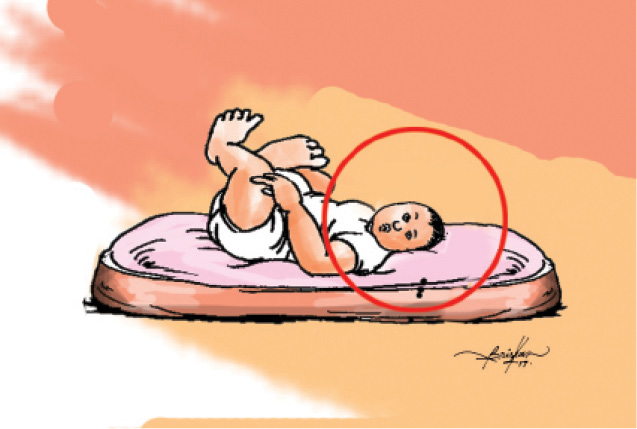Measles is reported in many of our cities
I want to sincerely commend you for writing on yellow fever and pneumonia in the last two weeks. I found them very educative and useful. Please also note that at the moment in many part of Nigeria, measles is on the increase. Kindly share useful information with your teeming readers. Abu V. Thanks Abu for […]

Baby suffering from Measles.
I want to sincerely commend you for writing on yellow fever and pneumonia in the last two weeks. I found them very educative and useful. Please also note that at the moment in many part of Nigeria, measles is on the increase. Kindly share useful information with your teeming readers.
Abu V.
Thanks Abu for your question and kind words. The column is for readers, thus, I am committed to responding to your needs. Measles is a childhood infection caused by a virus. The disease can be serious and even fatal for small children.
What are the symptoms?
The signs and symptoms of measles appear around 10 to 14 days after exposure to the virus. They include:
- Fever
- Dry cough
- Runny nose
- Sore throat
- Inflamed eyes (conjunctivitis)
- Tiny white spots with bluish-white centres on a red background found inside the mouth on the inner lining of the cheek — also called Koplik’s spots.
The infection occurs in sequential stages over a period of two to three weeks.
- Infection and incubation. For the first 10 to 14 days after you’re infected, the measles virus incubates. You have no signs or symptoms of measles during this time.
- Non-specific signs and symptoms. Measles typically begins with a mild to moderate fever, often accompanied by a persistent cough, runny nose, inflamed eyes (conjunctivitis) and sore throat. This relatively mild illness may last two or three days.
- Acute illness and rash. The rash consists of small red spots, some of which are slightly raised. Spots and bumps in tight clusters give the skin a splotchy red appearance. The face breaks out first.
- Communicable period. A person with measles can spread the virus to others for about eight days, starting four days before the rash appears and ending when the rash has been present for four days.
What are the causes?
- Measles is a highly contagious illness caused by a virus that replicates in the nose and throat of an infected child or adult. Then, when someone with measles coughs, sneezes or talks, infected droplets spray into the air, where other people can inhale them.
- The infected droplets may also land on a surface, where they remain active and contagious for several hours. You can contract the virus by putting your fingers in your mouth or nose or rubbing your eyes after touching the infected surface.
What are the risk factors?
Risk factors for measles include:
- Being unvaccinated. If you haven’t received the vaccine for measles, you’re much more likely to develop the disease.
- Traveling internationally. If you travel to developing countries, where measles is more common, you’re at higher risk of catching the disease.
- Having a vitamin A deficiency. If you don’t have enough vitamin A in your diet, you’re more likely to have more-severe symptoms and complications.
What are the complications?
- Ear infection: One of the most common complications of measles is a bacterial ear infection.
- Bronchitis, laryngitis or croup: Measles may lead to inflammation of your voice box (larynx) or inflammation of the inner walls that line the main air passageways of your lungs (bronchial tubes).
- Pneumonia: Pneumonia is a common complication of measles. People with compromised immune systems can develop an especially dangerous variety of pneumonia that is sometimes fatal.
- Encephalitis: About 1 in 1,000 people with measles develops a complication called encephalitis. Encephalitis may occur right after measles, or it might not occur until months later.
- Pregnancy problems: If you’re pregnant, you need to take special care to avoid measles because the disease can cause preterm labour, low birth weight and maternal death.
How to prevent it?
- If someone in your household has measles, take these precautions to protect vulnerable family and friends:
- Isolation: Because measles is highly contagious from about four days before, to four days after the rash breaks out, people with measles shouldn’t return to activities in which they interact with other people during this period.
- It may also be necessary to keep non-immunised people, siblings, for example, away from the infected person.
- Vaccinate: Be sure that anyone who’s at risk of getting the measles who hasn’t been fully vaccinated receives the measles vaccine as soon as possible. This includes all infants older than six months.
